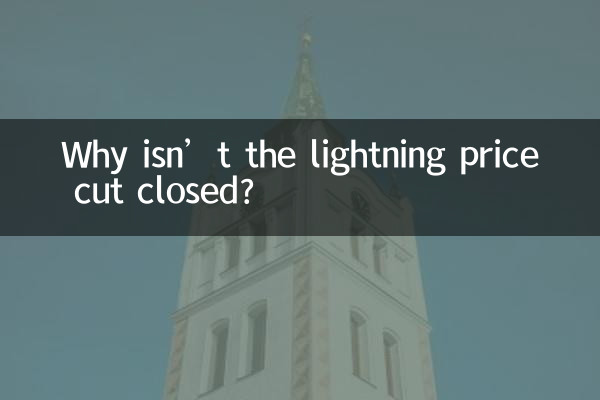Why isn’t the lightning price cut closed? Revealing the controversy and survival logic behind the platform
Recently, discussions about the “flash price reduction” platform have once again become a hot topic on the Internet. As an e-commerce platform that focuses on low-priced goods, lightning price cuts have long been on the edge of law and morality, but have never been completely banned. This article will analyze the reasons behind it based on the hot topic data on the entire network in the past 10 days.
1. Hotspot data across the entire network: Controversy over lightning price cuts continues to ferment

| Topic keywords | Amount of discussions (articles) | Main points of dispute |
|---|---|---|
| Lightning price reduction on fake goods | 12,800+ | Users complain about product authenticity |
| Lightning price reduction routine | 9,500+ | Marketing methods suspected of fraud |
| Lightning price reduction rights protection | 6,300+ | Lack of after-sales service |
| Why not ignore the flash price reduction? | 4,200+ | Questioning the lack of supervision |
2. Why does the platform survive despite repeated complaints?
1.Operating in a legal gray area
The platform circumvents brand authorization issues through the names of "overseas purchase" and "tail stock clearance". The product page is marked as "non-authentic" but uses authentic pictures to promote it, creating space for legal evasion.
2.Accurate positioning of user groups
It is mainly targeted at consumers in third- and fourth-tier cities who pursue “big brands and low prices.” Such users have relatively weak awareness of rights protection, and the cost of handling customer complaints on the platform is low.
3.Capital operation guarantee
Public information shows that the platform has completed multiple rounds of financing, with the latest valuation in 2022 reaching 5 billion yuan, and has financial reserves to deal with routine administrative penalties.
3. Comparison between regulatory status quo and platform survival strategies
| regulatory measures | Platform response | Effect evaluation |
|---|---|---|
| Industrial and commercial interviews | Remove some controversial products from shelves | Effective in the short term, but rebounds quickly |
| consumer complaints | Set up a high-threshold compensation mechanism | The actual loss rate is less than 5% |
| media exposure | Increase advertising to divert attention | The popularity of public opinion lasts for 2-3 weeks |
4. Expert opinion: the underlying reasons for the ban dilemma
1.It is difficult to fix evidence
Experts from the China Consumers Association pointed out: "The platform adopts a 'break it into parts' strategy, and the amount involved in a single case is often lower than the filing standard, requiring joint enforcement by multiple departments."
2.local protective factors
According to data from Qichacha, the platform is registered in an e-commerce pilot zone and enjoys special tax policies. Its tax payment in 2023 will rank among the top ten in the region.
3.Market demand is real
The "2023 Sinking Market Consumption Report" shows that about 38% of consumers clearly stated that they "know fakes and buy fakes", and these users form the basic base of the platform.
5. Forecast of future trends
Recently, the State Administration for Market Regulation has solicited opinions on the "Measures for the Supervision and Administration of Online Transactions" and plans to establish a "blacklist" system. However, industry insiders believe that unless payment channels are cut off or domain names are banned, similar platforms may still continue to operate by changing their vests.
Consumers should note:
1. Keep complete transaction documents
2. Be wary of the "limited flash sale" rhetoric
3. Give priority to self-operated products on the platform
4. In case of disputes, promptly complain through the 12315 channel
As of press time, the lightning price reduction APP can still be downloaded normally in major app stores, and daily active user data shows that its operations have not been significantly affected. This phenomenon reflects the complexity and challenges of current e-commerce supervision, and also indicates that there is still a long way to go for the standardized development of the platform economy.

check the details

check the details